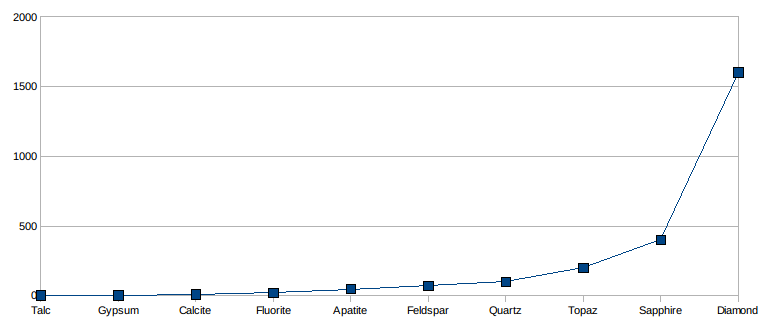Minerals vary widely in their hardness, the strength of the molecular or interparticle bonds that make them resist scratching. To quantify that property geologists have defined the Mohs Scale. It ranges from soft talc = 1, through calcite = 4, quartz = 7, up to sapphire = 9, and finally diamond = 10. But those rank-order numbers don't reflect the true hardness of diamond. It should actually be many hundred, as this quantitative graph of absolute hardness depicts the data:

For trail running, similarly, there's a difficulty scale that Ultrarunning magazine has defined. It's two-dimensional, with ratings for terrain and surface ranging from 1 to 5 for each:
Terrain:
1 = flat or nearly flat
2 = rolling, total climb up to 50 feet per mile (2500 feet in 50 miles)
3 = hilly, total climb between 50 and 150 feet per mile (2500 - 7500 feet in 50 miles)
4 = very hilly, total climb between 150-250 feet per mile (7500-12,500 feet in 50 miles)
5 = mountainous, total climb more than 250 feet per mileSurface:
1 = paved or very smooth surface
2 = mostly groomed trail or dirt roads
3 = trail or dirt road with some rocks, root, and/or ruts
4 = trail or dirt road with substantial rocks, roots and/or ruts
5 = very rough trail
In this system the Bull Run Run = (2,3) and Massanutten Mountain Trails = (4,5). The legendary Barkley Marathons is officially (5,5) — but, like diamond on the Mohs scale, perhaps should be more like (100,100)!
(cf. Big Stick, ...) - ^z - 2011-01-05